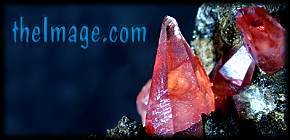
|
|
|||
|
Name: |
topaz |
|
|||
|
Class: |
Silicates |
||||
|
Chemistry: |
Al2(SiO4)(F,OH)2 Aluminum hydroxy fluoro silicate |
||||
|
Color(s): |
blue, orange, clear, yellow, red, pink, violet, green Streak: white |
||||
|
Hardness: |
8 |
SpecGrav: |
3.5 - 3.6 |
||
|
Fracture: |
conchoidal |
Cleavage: |
perfect basal |
||
|
Crystal: |
orthorhombic (often capped columnar-pyramidal) |
||||
|
Envronment: |
high temperature formation in igneous rocks and veins, also hydrothermal replacements |
||||
|
Association: |
albite, quartz, beryl, rutile |
||||
|
Locals: |
| USSR | Brazil | Colorado, Utah, Maine/USA | Germany | Burma | Sri Lanka | Pakistan | |
||||
|
Misc: |
The name Topaz is thought to have come from the island named Topazion (after the Greek "topazos"), which was later changed to Zebergit, and is now called St. John's Island, in the Red Sea. It is not found there, but it is believed that it may have been the name originally given to peridot (mineral olivine) which is abundant there. |
||||
|
Photos |
|||||
|
1.) Topaz Mtn., Utah |
5.) Thomas Mts., Juab Co., Utah(closeup) |
||||
|
|
|
|
|
|
|
|
|
|